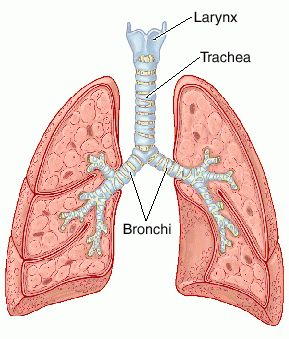
If you have ever heard a high-pitched wheezing sound when your child breathes in, you have heard stridor. This condition is the result of your child’s airways being blocked or obstructed in some way.
Your child’s airways are made up of several structures including:
- Nasal cavity
- Nose
- Mouth
- Sinuses
- Larynx
- Trachea
- Bronchial tree
When your child has a narrowing or blockage of any of these structures, the high-pitched wheezing generally occurs when he or she draws a breath in. However, in some cases you might hear it during exhaling as well.
Stridor or Stertor
 Stridor (Latin for “creaking or grating noise”) is a high-pitched breath sound due to turbulent air flow in the larynx (voice box) or lower from the trachea or bronchi. It should not to be confused with stertor which is a noise originating from the pharynx.
Stridor (Latin for “creaking or grating noise”) is a high-pitched breath sound due to turbulent air flow in the larynx (voice box) or lower from the trachea or bronchi. It should not to be confused with stertor which is a noise originating from the pharynx.
Stridor is a medical sign caused by a narrowed or obstructed airway. It can be inspiratory, expiratory or biphasic – although it is usually heard during inspiration. Inspiratory stridor often occurs in children with croup. It may indicate serious airway obstruction from conditions such as epiglottitis, a foreign body lodged in the airway, or a laryngeal lesion. Stridor should always command attention to establish its cause.
A stertor is a respiratory sound characterized by heavy snoring or gasping. It is caused by partial obstruction of airway above the level of the larynx and by vibrations of tissue of the nasopharynx, pharynx or soft palate. This distinguishes it from stridor. Stertor is low-pitched, non-musical, and occurs during the inspiratory phase of breathing. In general terms it is a snoring or snuffly sound.
Causes of stridor
Stridor is caused by narrowing or obstruction of:
The larynx
There are 3 main parts to the larynx – these parts are:
- The supraglottis – the area above the vocal cords that contains the epiglottis cartilage
- The glottis – the area between the vocal cords
- The subglottis – the part below the vocal cords, containing the cricoid cartilage that continues down into the windpipe
The trachea
- The trachea, or windpipe, is a wide, hollow tube that connects the larynx (or voice box) to the bronchi of the lungs.
The bronchial tree
- The bronchial tree is named for the intricate system of air passages inside each lung. Air enters the lungs from two bronchi.
Stridor can be caused by infections, injuries, birth defects or other problems.
The most common causes are due to infections, including:
- Croup – This is the most common cause of stridor in children, and is caused by a virus. The virus and subsequent illness causes the airways to swell, resulting in the audible sound.
- Tonsillitis – If your child is suffering from a sore or inflamed throat, it is usually an infection known as tonsillitis. This illness results in swollen, inflamed tonsils, which can partially obstruct the airway.
- Epiglottitis – This is a serious bacterial infection that causes the epiglottis to become inflamed and swollen. This is a life-threatening condition that prevents your child from being able to breathe. However, this illness is very rare.
Trauma is another cause of stridor, and can be the result of a foreign body in the ear, nose, or throat that is blocking the airway. This can also happen if your child drinks or swallows harmful chemicals or other liquids that cause damage to the airways.
There are also congenital causes of stridor, which are problems that are present at birth. In most cases, your child outgrows these causes. However, other conditions may require surgery in order to make sure your child’s airway is not blocked as he or she grows.
Diagnosis
Stridor is generally diagnosed during a physical examination and review of your child’s medical history. In some cases, your child’s doctor may choose to run imaging tests such as CT scans, x-rays, or MRIs to make sure that there are no issues with internal structures that are causing the stridor. Your child’s doctor may decide that a bronchoscopy is necessary, if the stridor is severe. A bronchoscopy involves a flexible tube that has a camera attached to one end. The doctor will use the scope to look at your child’s airways to see if there is a visible problem that needs to be addressed.
Treatment
Stridor may be treated in a number of different ways depending on the severity and what the doctor finds during the examination and testing. For stridor that is caused by an underlying infection, medications may be all that is needed to ease the swelling and inflammation. If your child repeatedly gets stridor, he or she will need to see an ENT specialist to determine the cause, and discuss potential treatment options.
If your child is suffering from severe stridor, or is showing signs that he or she is in distress or unable to draw in enough air, emergency treatment, including surgery may be required.
Stridor is a common illness in children, and with proper treatment, it will go away. If you think your child is suffering from stridor, or the condition seems to be getting worse, it is very important that you seek medical treatment. If the problem is due to a blockage, it can be life-threatening if not addressed quickly.
If you have any questions about stridor in children, contact your local doctor, who will arrange for your to see an ear nose and throat specialist.
For more information click here.



